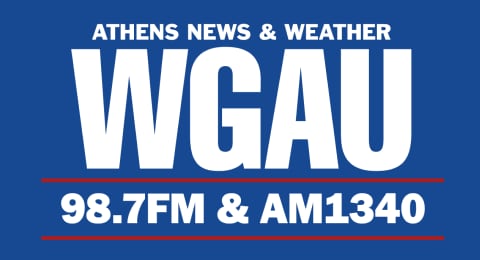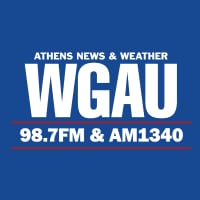When the New Orleans Pelicans made Zion Williamson the first pick of the 2019 NBA Draft, a long-suffering fan base was in full elation.
The Pelicans were knee-deep in an Anthony Davis trade request and were looking to start over again, this time with another top-tier prospect just like in 2012, when Davis was the clear-cut, no-nonsense No. 1 prospect.
The organization was pivoting toward a player who earned fame with his immense athleticism, displaying high-flying acts in high school, to the point where he was a YouTube sensation by the time he was just 16 years old.
Williamson also had the game to back up the hype. During his lone season at Duke, the 6-foot-6 power forward dazzled fans and scouts with forceful play, high-end production and a balancing act between being the most entertaining player on the court, as well as the best.
By all accounts, it was an easy call to take Zion at No. 1. Weight issues could be managed, and the lack of a jump shot could be rectified. At least, that was the thinking.
Fast-forward to 2024, and two things stand out.
One, Williamson was able to translate his high school and college production to the NBA level, turning himself into an All-Star and seamless offensive weapon for the Pelicans.
Two, building around him has proven enormously difficult, to the point where you have to wonder if there'll ever be a path to do it effectively.
Williamson is an undersized power forward who is not a strong shooter, not a strong rebounder and struggles to stay healthy.
What he does well, such as pressuring the rim, running the floor and converting inside, he does at elite levels. His 24.6-point career average on 58.8% shooting doesn't come out of nowhere.
The contrast between what he can do and what he can't is so stark, it's difficult to cement a permanent baseline for his game. That contrast also makes it nearly impossible to construct a roster around him.
Some may point to Giannis Antetokounmpo, who isn't exactly dissimilar to Williamson when it comes to the shooting department. Antetokounmpo, a notoriously shaky shooter, also relies a fair bit on athleticism and rim pressure. Why can't Williamson have a similar impact?
The answer is two-fold.
One, Antetokounmpo has positional size. He's 7 feet tall, which allows him to play center, and quite a bit of it.
Two, the difference in rebounding and defensive impact is night and day compared to Zion. Antetokounmpo is one of the league's best defenders, particularly when roaming freely, and he's been one of the best rebounders for years.
It can be tempting to draw parallels, however, Antetokounmpo simply doesn't need to overcome as many challenges as Williamson.
The Pelicans have played Williamson at center, and, yes, he's actually gotten better defensively as he's transformed from exciting prospect to NBA veteran. Unfortunately, neither element has made enough of a dent to where he can justifiably be catapulted into the conversation of being the best player in the league.
Essentially, his archetype is nearly impossible to build around. Despite his vast talents — and they are vast — the 24-year-old needs extremely specific weapons around him, on both sides of the floor, to become the best version of himself.
In today's NBA, you can't play a ton of center standing just 6-6, regardless of how high you can jump, unless you're one of the greatest defenders of your generation, such as Draymond Green. And one can make the case that Green is perhaps the lone player in the league who can get away with it.
For Williamson, this means there's an immediate need for him to play the four and get paired with a bigger player in the frontcourt.
Sounds easy enough, right? Rookie Yves Missi looks good, which means problem solved!
Except, not quite.
Williamson isn't a floor spacer, and in today's NBA, you can't justify having two players on the court at the same time who can't shoot the ball. So the aforementioned center will need to be a floor-spacer as well. That complicates matters, as Raef LaFrentz retired a long time ago.
The desired center would also need to be a strong rebounder with defensive know-how.
And, of course, if Williamson is to get fully optimized, you need that center to be able to catch lobs and play off a creator, as Williamson is a perfectly capable playmaker who needs the ball in his hands.
So, to fully optimize the flashy star that is Zion, the Pelicans need a center who can defend and rebound at a high level, while having the ability to both space the floor and act as a rim-running lob threat.
That basically fits the description of Victor Wembanyama who is, uh ... let's just say probably unavailable in trade conversations.
As for the three other positions on the floor, the Pelicans need shooting and lots of it. To embrace Williamson's playing style — it's all about tempo, aggressiveness and making decisions on the fly — it's utterly crucial he's constantly flanked by elite shooters who can carry significant volume.
Fortunately, that's far more achievable. At least, it would be if the buck stopped there.
Those same players will need some defensive prowess and size to offset Williamson's disadvantages.
Even if those players are somehow acquired, things now become a salary-cap issue.
While 3&D players with positional size do exist around the league, they're costly. You're not signing OG Anunoby or Mikal Bridges to sweetheart deals. Anunoby signed for over $212 million this summer, and there's a fair chance he never even touches All-Star honors. Bridges will also be looking at a deal in a similar salary bracket down the line.
The Pelicans do have Herb Jones and Trey Murphy, both of whom are locked into team-friendly deals, but questions remain about whether Jones can maintain the shooting he displayed last year, just as the Pelicans might need to see more defensively from Murphy before he can become their version of, say, Anunoby.
Finally, you need a real playmaker at the guard spot as to not overburden Williamson's playmaking. This is where the Dejounte Murray acquisition hit the right spot. He's exactly the type of player the Pelicans need to balance the offensive load.
Taking it all in, it's difficult to not compliment executive vice president of basketball operations David Griffin for giving it his all. He's genuinely tried to build a roster around the strengths and weaknesses of Williamson, albeit within a realistic framework, as he has to take into account the salary cap.
The laundry list of skills needed from players not named Zion Williamson is vast, and ultimately it might be too much for Griffin to realize. And therein lies the rub.
As good as Williamson is, and let's not pretend otherwise, the specifics around him are so unique, there is not a prior blueprint to take inspiration from.
Williamson's best comparison, Charles Barkley, was drafted 35 years before Zion was. The league was different. It looked different. It played different. The talent was different.
Even if Griffin can take some inspiration from how the Philadelphia 76ers and Phoenix Suns built around Barkley, it's minimal, and not particularly applicable to the league today.
But even if Griffin could find a way, and even if he found that magical center with all those aforementioned talents, one final area of concern looms large: availability. You knew it was coming.
Williamson, for a variety of reasons, simply hasn't been durable during his NBA career, having played just 189 games during his six-year career and missing three games already this season. So even with optimal surroundings, there's the issue of building a team around a star who is probably missing a solid chunk of time each and every season.
And, as most can deduce, if the engine of the vehicle is missing, the car won't run.
This isn't an attempt to convince Pelicans fans that Williamson needs to be traded. At least, not necessarily.
Buying into his upside is entirely reasonable, especially as no one on the roster comes close to having a similar impact when healthy. Even with the difficulties of building around him, Williamson is elite. He's one of the most dangerous fastbreak players in all of basketball. His touch around the rim is frankly outrageous, and he will overwhelm 90% of the league from an athletic and strength perspective.
He's the power forward version of prime Russell Westbrook. Relentless, overpowering, coordinated and utterly fearless.
Unless the Pelicans find a player who offers anything that can even come close to what Williamson provides, rolling the dice on the former Duke star is an entirely sound strategy.
Because, let's face it, Brandon Ingram doesn't have the same upside, no matter how much freedom he gets. Nor does Murray, for all of his skills. Jones, Murphy, Missi and CJ McCollum also are tiers below.
It's all justifiable. At least until the day comes when the Pelicans have someone on their roster who can challenge for the crown. When that day comes, just as it did in Minnesota when Anthony Edwards overtook Karl-Anthony Towns, the Pelicans must be ready to make some bold decisions.
But until then, they'll have to continue to sail the waters of frustration, forever embedded in their search of a Zion Williamson-optimized roster.

:quality(70)/cloudfront-us-east-1.images.arcpublishing.com/cmg/YBCLJKXEGW6ZYSEV7A4PIR2QPA.jpg)
:quality(70)/cloudfront-us-east-1.images.arcpublishing.com/cmg/XGDFDHGENJG5HLIZP3Z6CGOOTM.jpg)
:quality(70)/cloudfront-us-east-1.images.arcpublishing.com/cmg/GMXYY7SVUBDU3FLERVFELJRU5Q.jpg)
:quality(70)/cloudfront-us-east-1.images.arcpublishing.com/cmg/4SY6HP6T3BBJ5A5T3OVEBGJ45M.jpg)
:quality(70)/cloudfront-us-east-1.images.arcpublishing.com/cmg/ECTUEIEBFZD6NPUEKCN3UJ6N3M.jpg)
